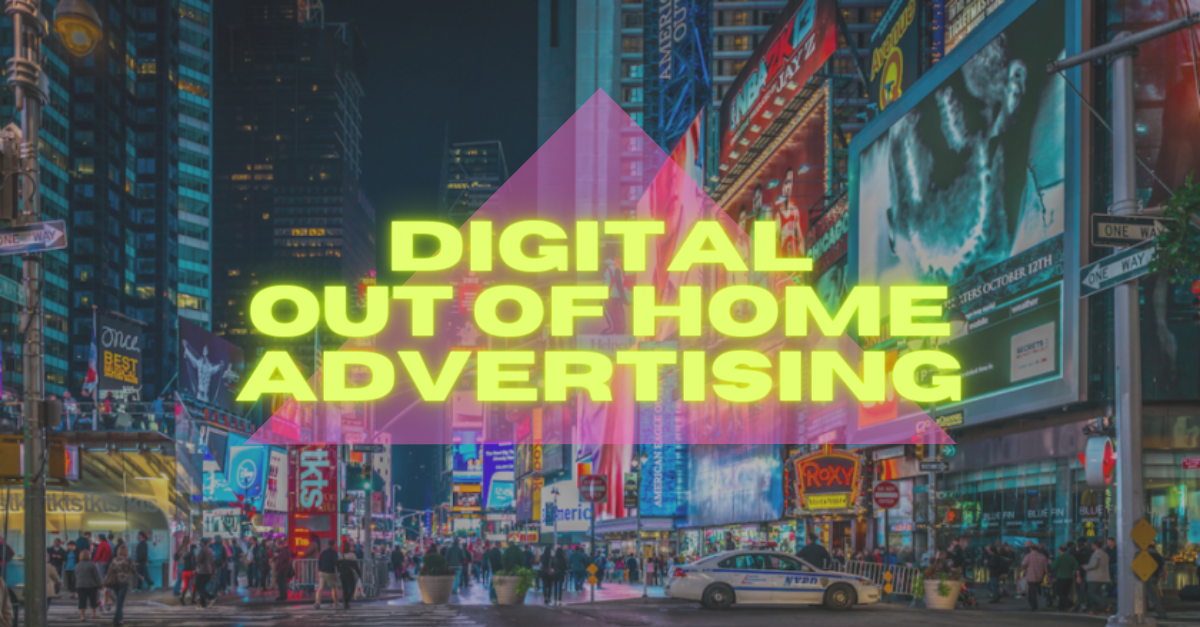Digital-Out-Of-Home (DOOH) advertising is similar to traditional Out-Of-Home advertising, with added technological abilities. As technology evolves, there has been increased adaptation of DOOH advertising, so today we’re exploring the highlights of DOOH advertising.
What is OOH Advertising?
Out-of-Home (OOH) advertising is, as the name suggests, advertising to consumers outside of their homes. OOH ads target consumers when they are in public places such as commuting to work, waiting in elevators or in specific commercial locations. Digital-Out-Of-Home, on the other hand, is similar to traditional OOH but powered up with new technologies including video capabilities, geofencing, tracking, retargeting, and personalization.
Below is an example of a typical Out-of-Home Ad. Coca Cola has paid for this bus to be wrapped with their name and logo. Other forms of OOH advertising include billboards, car wraps, and train or bus stop posters.

What Does DOOH Offer the Industry?
Digital-Out-Of-Home (DOOH) advertising is one of the fastest growing forms of advertising today, as for many reasons, it is a very attractive form of marketing. DOOH offers some of the same advantages as online display advertising, such as enhanced targeting and programmatic buying options, but at the same time it is immune to ad blockers and is not skippable like many other forms of digital advertising.
Digitalization Has Revolutionized OOH Reach, Targeting & Creative Options
Think about the volume of digital screens you encounter outside of your home on a daily basis. Digital screens are now ubiquitous in our lives from gas stations, to doctor’s offices, to convenience stores, restaurants, movie theaters and more. This proliferation of screens opens new opportunities to reach consumers in different settings.
In addition to increased reach, OOH digitization has unlocked the ability to upgrade the traditional static OOH ad to more engaging formats that include video and animation.
Further, digitization of OOH assets has led to a sea change in targeting capabilities.DOOH ads can now be dayparted, more succinctly targeted demographically, and even geofenced and retargeted to mobile devices that pass by to drive multi-screen engagement.
As DOOH advertising grows in popularity, we expect to see even more screens popping up in Out-Of-Home settings.
What Does the Media Buying Process Look Like?
There are several ways to purchase DOOH ads, including:
- Real Time Buying: an auction based bidding protocol in which advertisers compete against each other to display ads to specific users. RTB offers a lot of capabilities in terms of use of data as well as inventory type, and is universally considered the most flexible model on the market.
- Programmatic direct: a one-to-one media buying process. It is a very similar model to the private marketplace, with the exception that advertisers and publishers agree on specific inventory based on a fixed CPM.
- Non-programmatic guaranteed: a manual insertion process which requires maximum human effort. Inventory is sold at a fixed CPM rate. The inventory is “guaranteed” or “reserved” for the buyer. Sometimes, advertisers are required to pay a premium price in return for specific exposure conditions.
As technology continues to evolve, we expect that DOOH advertising will continue to rise in popularity and may even take new forms. Interested in a DOOH advertising strategy for your business? Reach out to us.


